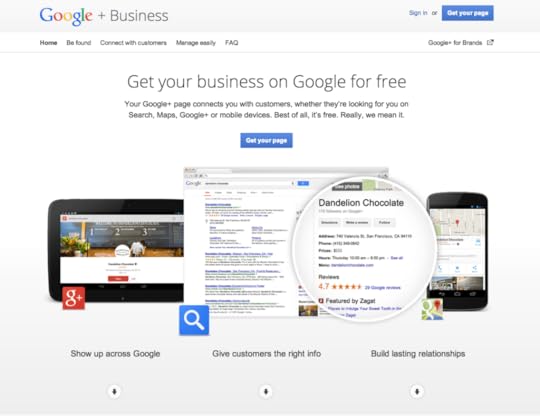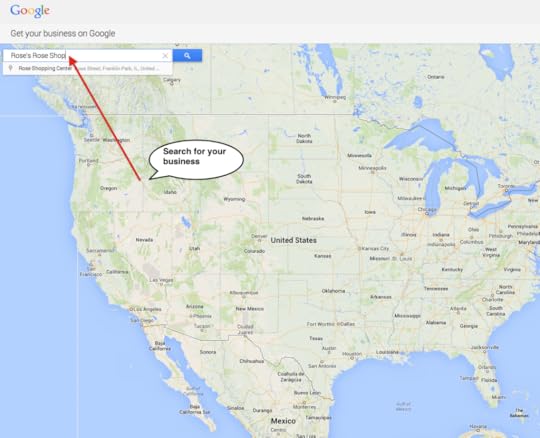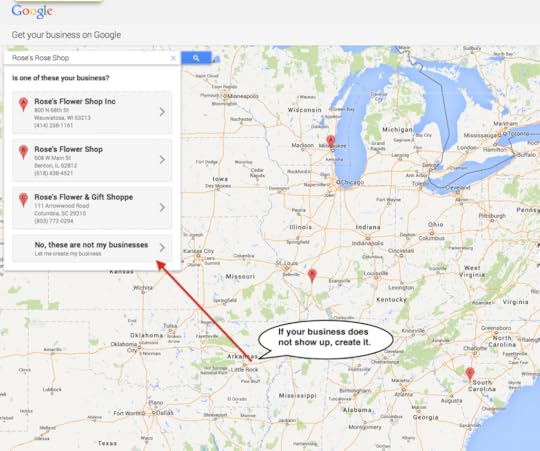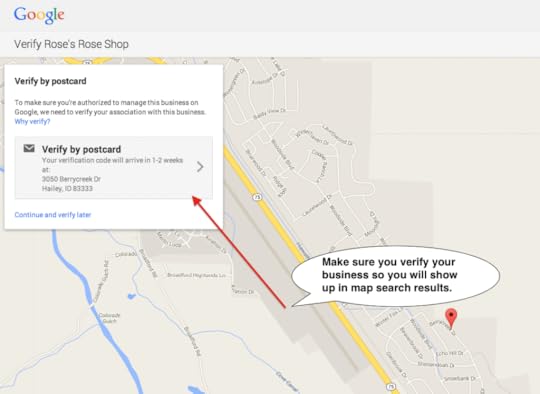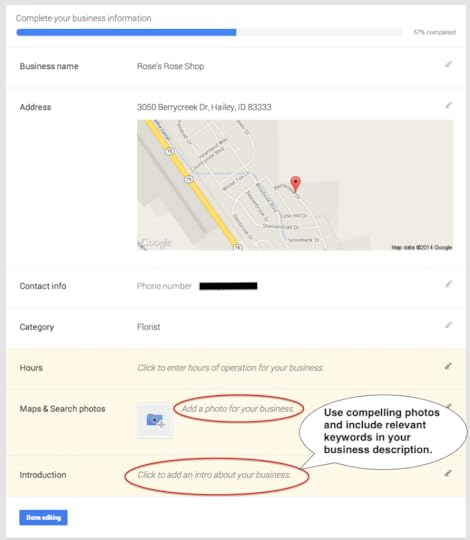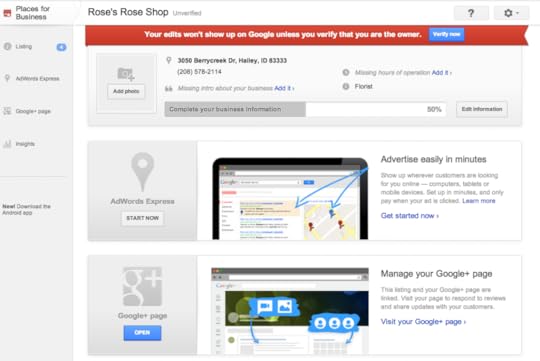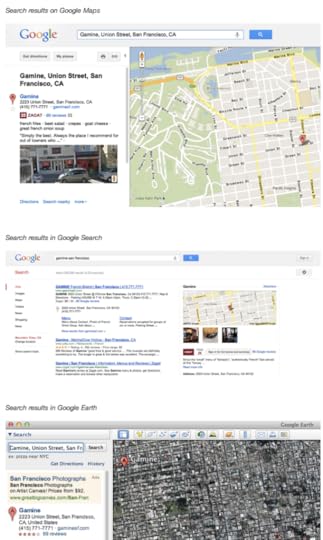Erik Qualman's Blog, page 598
June 17, 2014
5 Strong Reasons Why Social Media is the Best Channel for Marketing

Businesses use diverse marketing channels to promote their brand and the products and services they have on offer. With the amount of competition out there, it is of significant importance that businesses find and test new marketing channels to make sure they not only have first mover advantage against the competition in their niche but also concentrate their energies on marketing channels that can deliver solid returns on investment.
Over the last few years, social media has emerged as the #1 channel chosen by marketers to generate brand awareness and increase business profitability. It is the new darling of marketers. Whether it is a product based business or a professional services firm, social media doesn’t play favorites. If you get your social media marketing right, there is no doubt your business is going to benefit from it.
But the question is – Why has social media scaled the popularity charts as a marketing channel? Why do so many marketers swear by social media and consider it a critical part of their marketing armory?
The answer lies in some of inherent strengths of social media and all that it brings to the table. Let’s take a look at some of these strengths:
1. The Sheer Number of Users Across Social Networks
As of March 2014, Facebook has 1.28 billion monthly active users. Google+ has over 1 billion registered users. Twitter has 255 million monthly active users. With social media marketing you will be able to tap into a user base that is growing at the rate of knots, giving you an opportunity to reach out to a wider target audience. The fact that you can be very sure that a large percentage of your target customers will have a profile on at least one of the many social networks you will be targeting as a part of your marketing campaign means you can be sure that your brand message will reach them.
Not many other marketing channels have the scale and scope of social media. This is its strength and you can leverage it to its fullest.
2. Most Common Online Activity
Social networking is a top online activity, with Americans spending an average of 37 minutes daily on social media. As a marketer, you want to use a channel that your target customers are actively using, and in social media you’ve that channel.
It all begins with identifying a social network that you know your target audience will be active on and making sure your business engages with this audience on that particular network.
e.g. LinkedIn can be the preferred social network for marketing business consulting services. There is a very good chance that this platform will be frequented by your target audience and what’s more they will be active on it. This incidentally is why, with 3-times higher visitor-to-lead conversion rate, this network holds tremendous potential for services firms.
3. Brand Discovery
Did you know that 41% of social network users discover brands/services by seeing ads on social networks, and a massive 37% of them research for brand/product/services on social media before buying them? (All figures from eMarketer)
This means your business cannot afford not to have a presence on the right social network. You will be losing out on a tremendous opportunity for your business to be found by your target users. You can’t let go of this opportunity.
4. In Personal Recommendations We Trust
People trust brand/product/services recommendations from other people and this is where social media comes into its own. Social media by its very nature allows people to engage with one another at a personal level. People get in touch with other people, interact with them, share content, re-share content and so on and so forth. During the course of social media engagement many of them also recommend the use of a particular product or a service to their friends or family.
Such recommendations have credibility because they are made by real people. If it’s your service that’s been recommended there is a very good chance that they will come to your website to check it out. These people essentially are also targeted leads and have a better chance of converting into paying customers.
e.g. If people are searching for a firm offering legal services and come across the name of your firm on social media because it’s been recommended to them by their friend or a family member, they are likely to trust it more. This is good news for your firm and it is only social media marketing that can ensure your service gets the recommendation it deserves on social media.
Never forget the power of recommendations when pitching your business to a prospect.
5. Brand Authority and Reputation
One reason why marketers love social media is its ability to build the reputation of a brand. This is accomplished by creating and publishing content and sharing it on social media. The idea is to create high quality content that showcases your domain expertise and sharing it with the maximum number of people. If you content is share-worthy it will get shared and re-shared by maximum number of people, which not only improves brand awareness but also enhances your reputation as somebody who can be trusted to deliver on a customer’s expectations.
It is pretty simple really.
Say you are a firm offering accounting and finance services, and want to be seen as somebody who is an expert in your niche, or in your geographical area. This can be achieved by creating and publishing content on your blog or on a website that is popular in your city or state. This content should be useful and actionable and must strive to answer a few questions that a large section of your target users might have and which allows you to showcase your domain expertise.
Sharing this content across the various social networks ensures a large number of people see and appreciate it. As a result, they think your services are a trustworthy option because the content they’ve read has added value to their lives in some form or another.
To Conclude
Purely on the brunt of its excellent reach, the number of active users and its ability to engage them at a personal level, social media is a great marketing tool. To make the most of it, you need to align its use with a content marketing strategy.
Both need to work in tandem to deliver the returns you are looking for. In fact its ‘great content’ that lies at the back of every successful social media campaign. If you do not have great content to back your social media strategy, there is a very good chance it will fail and that too big time.
[image error]
June 16, 2014
Use Social Media to Return to Work

 Whether you’re in need of a new job or a different health insurance plan while out of work, social media is a great resource when it comes to employment and healthcare.
Whether you’re in need of a new job or a different health insurance plan while out of work, social media is a great resource when it comes to employment and healthcare.
From surfing the social accounts of companies that are currently hiring to comparing health insurance rates, social media can help you during your search.
Here are a number of reasons why it pays to be socially savvy while hunting for a job and health coverage:
Getting the Word Out About Your Search
From Facebook and Twitter to professional networking sites like Linkedin, social media is all about staying connected with your friends, colleagues, and peers.
So, if you’re in search of a new job, why not just let the social masses know by saying so. Letting your social following know the type of career you’re looking for and even posting a link to your résumé is an effective way to get the word out.
The same is true when it comes to finding a different health insurance plan.
If you’re in search of a different healthcare provider or you need to find a cheaper rate while you’re out of work, it is easy to find health insurance for the recently unemployed by using social media as a resource.
A number of health insurance providers have Facebook pages that can answer many of your questions.
In addition, gathering opinions from your friends and followers is a great way to find the best rates.
Networking Made Easy
Finding a job is all about networking, which is why social media is such an important tool for your job search.
Sure, Linkedin is where the professionals go to share their skills and expertise as well as promote their careers, but Facebook is just as effective in terms of professional networking.
If you do go the Facebook or even the Twitter route when networking your way to a new job, make sure your account history is squeaky clean. You don’t want potential employers finding a post that describes your skills and qualities right next to a picture of you at a party.
Better yet, just set your Facebook account to “friends only” so employers can’t see all of your status updates and photos.
Researching the Employer/Insurance Provider
Getting to know your potential employer is one of the best ways to land a job, so research the employer’s Twitter and Linkedin profiles to familiarize yourself with the company.
If possible, track down the employer’s hiring manager too. This way you’ll have a point of contact when it comes to reaching out with your résumé or setting yourself apart from other candidates during the hiring process.
As for health insurance, social media is also a great research tool when it comes to getting to know different companies.
By perusing different providers’ social accounts, you can get a feel for their customer interaction and also see what current customers have to say about their coverage.
Keeping at It
Employers love potential candidates with an active social presence, so the most important point to remember when using social media to find work is to keep at it. Social networking will lead to business connections and future opportunities as long as you’re consistent.
Whether you’re searching for a new job, trying to find better health insurance rates, or both, let social media help you along the way.
Photo credit: Image courtesy of Stuart Miles / FreeDigitalPhotos.net
[image error]
How Mobile Gaming Evolved

Smartphones have become so much part of our lives that we cannot imagine a day go by without checking our Facebook or going on Instagram. With the average smartphone user dedicating an hour every day to gaming and revenue from games and game content being on par with the movie industry, it’s not surprising that the mobile game industry is massive and growing. Mobile gaming companies are multiplying like mushrooms and mobile game developers are in increasing demand. But mobile games weren’t always so slick and immersive; let’s take a look at the history of mobile games.

Source: WebDesignDegreeCenter.org
[image error]
June 12, 2014
Big Social Media Profile Changes On the Horizon

Brands looking to make the most out of their social media profiles should be aware of two updates that are going on with Facebook and LinkedIn.
First, as of right now every brand on Facebook — all 30 million of them — can update their pages to the newest configuration. The new design, which was available to larger brands before now, replaces the two column timeline with a single column and takes away the thumbnail images from the tabs under the main cover photo. Also included in the new design, Facebook noted, is the ability to move around important brand information tabs such as reviews, menus and photos in the top navigation menu and the left column. Some information businesses like to prominently display, such as phone numbers, hours of operation, photos, reviews and maps will show up on the left-side column on the page. The new design also makes brand pages look more like personal pages and is intended to make a brand’s Facebook page easier to search through.
Facebook said that those brands which have been putting off the switch will be given one last chance to delay the inevitable: “Admins that want to update their Pages before switching to the new design can wait up to two weeks before making the switch. However, every Page will automatically switch to the updated design two weeks after the tour has been viewed.”
Meanwhile, LinkedIn is just starting its profile redesign. The new design will feature a large cover photo in addition to the small headshot most profiles take advantage of, which is reminiscent of Facebook, Twitter and Google+.
For now, most users won’t be affected by the new profile option because it’s only available to LinkedIn premium users. LinkedIn also announced several other upgrades that premium users can take advantage of for about ten dollars a month. Some of the other features that will be available for those willing to pay up include:
Help optimizing profiles with specific keywords to improve search results
The option to make your profile “open,” fully visible to all LinkedIn members.
The ability to see every profile visitor for the last 90 days.
Instant access to the top 100 results for How You Rank versus your connections and company peers.
Being given a more prominent showing and display when people are using the search function inside LinkedIn.
All of this comes just a few short weeks after Twitter announced its own profile redesign, which also features a large background image and a smaller feature image. The new setup is being used right now by a small group of test users and it will be rolled out to everyone soon.
Twitter’s new profile also allows users to customize some other features to highlight specific tweets or information.
Best Tweets: The more engagement a tweet has received, the bigger the font.
Pinned Tweet: Users can pick a single tweet to pin to the top of the page to highlight that one tweet.
Filtered Tweets: Users now have an option on how to view other uses’ profiles: Tweets, Tweets with photos/videos, or Tweets and replies.
These three social networks all seem to have the same goal of making profiles as visual as possible while providing brands and users additional customization options. Not updating a profile to take advantage of every opportunity, including the use of images, is one of the 15 biggest mistakes brands can make. Brands that want to stand out from the tens of millions of other users across the multiple platforms should keep an eye on these updates and take advantage of the opportunities that are coming soon.
[image error]
June 11, 2014
Social Media On the Road? Don’t Risk It!

Our brains can only tolerate so much distraction while we’re on the road. Unfortunately, new gadgets are leading to massive spikes in vehicle-related accidents and fatalities. Part of the reason is cognitive load – it’s the amount of processes your mind has to juggle at once while you’re driving.
Mini distractions, such a glance at your phone, a verbally-dictated message, or the sound of a mobile alert can actually jerk your attention away from driving long enough to lead to an accident. Updating your status or direct messaging someone while driving isn’t worth the potential cost of health, wellness, and life. Rest your fingertips, keep your eyes on the road, and read ahead to learn how to curtail dangerous distracted driving habits.
A Modern Day Crisis
Our current conception of distracted driving is a relatively recent development. Mobile consumer technologies in the last decade have increased our capacity to receive real-time information. However, these new freedoms come with the price of our attention spans and our driving abilities. It’s no surprise that upcoming generations are the ones most likely to be affected by distracted driving due to technology, due to extremely high social media and texting adoption rates amongst teens. According to the Transportation Research Institute at the University of Michigan, an astonishing 20% of teen drivers are using their mobile gadgets while driving, while only 10% of adults have succumbed to this extremely risky habit.
Voice Commands: Just as Distracting?
There is no sign that mobile technologies will be slowing down. In an attempt to make our gadgets safer for drivers, companies like Microsoft and Apple have been adopting voice command systems such as CarPlay and Windows Embedded Automotive to make app usage easier.
However, voice commands might be just a distracting as on-screen systems, which divert our eyes away from the road. According to studies conducted by MIT, research shows that our brains still can’t really focus on complex tasks, like driving, if dictating a new tweet or Facebook status into our car system is pulling our attention away. The cognitive load continues to be too demanding.
The Real and Deadly Consequences
Sadly, news about distracted driving accidents is appearing in the news more often. In April 2014, a driver in North Carolina collided head-on with a truck right after posting a Facebook status on the freeway. The timestamp from the post and the time of the emergency call have led police to link this fatal accident to distracted driving. According to the Centers for Disease Control and Prevention, about 3,331 people were killed in distracted driving accidents in the year 2011 alone. Posting selfies while driving, messaging friends, updating statuses, and using your mobile device in general can lead to enormously serious injuries or fatalities amongst drivers and pedestrians.
Decreasing Risk
As a driver, you can decrease distractions by placing your mobile devices in a location that is inconvenient to reach, such as the glove compartment or back seat. If you find yourself needing to check a device or have a conversation, then find a safe place to park and pull over. If you have friends or family members who are just learning to operate a vehicle, encourage them to take a defensive driving course so that they can protect themselves from distracted drivers. Understanding how to identify road risks early, such as drivers who are swerving, or driving erratically, can save lives.
It’s hard to tell if we’ll ever be able to curtail the risky behaviors associated with distracted driving. Ultimately, your social media statuses should never interfere with your ability to operate a vehicle. Set those devices aside, focus on the road, and travel safely!
Thumbnail: http://tinyurl.com/n66pdzn
[image error]
What Do Your Social Media Accounts Say About You? [Infographic]

Let’s put the rumors that hiring managers and recruiters are scouring the Internet looking for dirt on potential (or even current) employees to rest: They are.
Whether you are in the market for a new job or looking to advance in your current position, the writing is on the (virtual) wall: In today’s tough job market, social media can be your best friend or your greatest foe. Here, we explain what hiring managers are looking for when they scour the web. Along the way, we’ll provide effective strategies to ensure that your social media presence helps more than harms.
Hiring managers and recruiters report that they use social media to:
Confirm an applicant’s credentials
Look for Red Flags like offensive and/or discriminatory posts.
Gauge an applicant’s level of engagement to a larger community.
Make an initial decision on “Fit” for the position and organizational culture.
LinkedIn is the most critical site for job seekers to get right, given that 92% of recruiters who vet via social media use the platform. Employers look to LinkedIn
not only to find talent and to post jobs, but also to do some fact checking on potential hires.
Quick Tips:
Include a Professional Picture: While a professional headshot isn’t required, bathroom mirror selfies are to be discouraged.
Craft a Compelling Summary: In the summary field (accessible when you indicate you want to edit your profile), LinkedIn prompts you to complete the sentence “I am passionate about…” Think of this as your 20-second professional sound byte.
Join Professional Groups: Inclusion in professionally relevant groups is an important way to establish credibility and interest. Pick a handful of Groups that you’d like to belong to and request membership.
Contribute Meaningfully: Thoughtful comments signal to a potential employer that you are involved in your community. Also, consider using LinkedIn to post some of your best content if you are a content producer.
Facebook is a font of information for employers and 54% of recruiters use it to screen candidates. Even if your Facebook page is pretty clean and family friendly, you may not want employers snooping around, nevertheless.
Quick Tips:
Privacy: With a little time and care, you can guard your Facebook profile carefully. After you have set your privacy settings to your liking, you can then check outhow your page appears to someone else.
Analyze Your Picture: Deleting that old picture of yourself guzzling beer is old news by now, but it still pays to consider what you use as your profile picture when your are job-seeking!
You can do a lot of damage or a lot of good in 140 characters. That now routine adage, “Think before you Tweet” is never truer than when you are seeking new opportunities. As with Facebook, employers look to Twitter to signal Red Flag issues. Make better use of that Twitter page in no time:
Quick Tips:
Profile Photo: If you use Twitter for professional purposes, it pays to use the same photo that you use as your LinkedIn photo so that employers can be sure that Ann Smith is the same as @Ann_Smith.
Follow Thought Leaders: Determine who the relevant thought leaders are in your field and begin following them.
Strive for Coherence: Twitter is an odd-bird (forgive the pun) in many ways, not least of which is the way that so many users display both personal and professional information on their feeds. A good rule of thumb is to ensure that your Twitter page links up with how you portray yourself across all of your social media channels if you plan to use it professionally.
Google+
Fairly new on the scene is Google+, which nevertheless packs a powerful punch in the social media world, with 31% of recruiters who use social media to find candidates consulting it. Employers look to Google+ for evidence of social presence and connectedness. To amp up your Google + page, do the following:
Quick Tips:
Connect with influential people via Circles: This will demonstrate that you are in on the industry conversation.
Link from Google+: One of the handiest things about this platform is how easily you can link to all of your othersocial media platforms from it.
Contribute Your Best Content: Unlike Twitter, which limits posts to 140 characters, Google+ gives you unlimited space. Use the opportunity to share your best posts, responses to articles, creative work, etc.
The Takeaway
It’s true that you don’t always have control over which opportunities come your way and which pass you by. But you do have control over how you are perceived on social media. Many resources exist to guide you through this process. Now that you are convinced that you can make the most of your social media profiles, check out the comprehensive resource below before you go…and good luck out there!

“Don’t inadvertently lose out on your next job. Follow this guide to make sure you look your best on social media. Optimize your profile on the top platforms. (via Michael Page). Thumbnail: http://tinyurl.com/nv9jfmr
[image error]
June 10, 2014
How Social Media Can Help People Get Fit

Getting fit is hard and anyone who tells you otherwise is probably trying to sell you something. Whether the goal is weight loss, muscle gain or just maintaining a healthy lifestyle, we humans have a habit of falling off the wagon. Not just once but repeatedly. Unless, that is, there’s someone else holding us accountable.
There is strong evidence showing that social support is one of the most important factors when it comes to successfully getting and then staying healthy. Why? Probably because while nearly all people are content to give up when the going gets tough if they’re only answerable to themselves, they’re less inclined to give up in front of hundreds of friends and followers.
It’s not about sidestepping failure in the form of cheesecake or a night of channel surfing. Social media is such a powerful tool in the quest to get healthy because it’s actually harder to avoid getting back on the wagon after a stumble.
The Why and the How
When someone shares their weight loss or activity goals with their network of social contacts, they’re more motivated to succeed (and less likely to quit) because someone else is watching. Whether that means loved ones on Facebook are offering up encouragement, running partners on Twitter are gently nudging them back up off the couch or even an app automatically reporting a lapse in activity, accountability matters.
Speaking of apps, in the absence of – or in addition to – the aforementioned friends and followers, fitness tracking devices and apps can provide almost the same level of accountability. Samsung was one of the first companies to integrate a complete fitness tracking suite into its mobile devices but plenty other device manufacturers have since followed suit. And there are always social-savvy apps, like the goal-focused Lift (which lets friends cheer you on) and the activity-focused MapMyRun (which can automatically post your route to Facebook), when you want to make your contacts part of your fitness journey.
It’s all about community, though all community is not created equal. The power of social media to help people get healthy can fail when an individual is ready to make a positive change and his or her network is not. Jealous friends and family can actually sabotage fitness goals by discouraging healthy habits or enabling unhealthy ones. That’s where social apps like Fitocracy come into play. It not only turns getting fit into a game, but also makes it a group endeavor. Getting cheered on by a tribe of virtual fitness buddies makes it easy to push on past the plateaus that too often derail health seekers.
Maximizing the Effect
A strong social network or compelling fitness app is only one piece of the puzzle. To tap into the full power of social accountability requires specific, achievable fitness goals that can be communicated with followers. For instance, whether the goal is “run three times a week” or “lose a pound a week,” it’s only the specificity that lets someone post or tweet that they met their goal (and then revel in the resultant accolades from a supportive network). And really maximizing the positive impact social media can have for health seekers means taking community a step further with reciprocity.
As motivational as praise from others can be, there’s nothing quite like cheering someone else on for their fitness or weight loss accomplishments. That’s because witnessing and appreciating what others can accomplish – whether via photos on Instagram or a Tumblr post or an in-app message – is always an inspiration.
Thumbnail: http://tinyurl.com/n3s4kaq
[image error]
Get Social to Position Yourself for a Great Career

 The job market is tough out there.
The job market is tough out there.
Whether you’re a first-time job searcher right out of school, or you’ve been in the workforce for some time and are looking for something new, you need to make sure you’ve got what it takes to position yourself for the best careers.
Having a little something extra is always a plus, and right now that something may be strong social media skills.
So what are the attributes that make you good at social media? What is the difference in captivating social media and those posts that people want to hide?
Sure, anyone can write a tweet or Facebook post, but is anyone going to read it, much less share it?
Here are some skills important to good social media technique, as well as the why’s of the importance of these skills. Read on!
What makes good social media?
• Engagement – Readers want to feel a part of your world. If they’ve taken the time to follow you, give them something back. Engage them. Maybe ask for input or a question now and then, giving a venue to interact with you.
• Clear and concise – If followers want to read a lot, they can go to pages on your website. Social media is quick and clean; keep it that way. No one wants to sift through cluttered words or incoherent babble. Keep it clean, clear and concise, your readers will thank you. Leave the mistakes and misspellings out, too.
• Wit – No, you don’t have to be a comedian, but a bit of humor and wit in these short pieces keep your followers and those liking you coming back for more, maybe even sharing your posts.
• Consistency – It’s nice for those interested in you to be able to count on you. That doesn’t mean an onslaught of numerous posts every day, but keep a regular schedule so no one forgets about you. Maybe once a day, definitely a few times a week. You’ll become a part of their social media world that your followers can count on.
• Cover more than one social media outlet – Maybe Facebook is your favorite, but don’t forget about Twitter and Instagram, Pinterest and Google+. Everyone has their preferences, so get yourself out there so you can be part of everyone’s favorite – you’ll be wherever they go.
Why is all of this important?
Social media is part of our world now.
Even those not taken with it can’t ignore the fact that is part of marketing, communication and, yes, daily life.
A Society for Human Resource Management’s 2013 survey discovered that 77 percent of organizations use social networking sites to recruit potential job candidates. The report also pointed out that 69 percent of organizations use social networking tools to target and recruit candidates with specific skill sets, 67 percent turn to social networking to increase employer brand and recognition and 57 percent utilize it to permit potential candidates to easily reach out to their organization regarding employment.
If you are a soon to be jobseeker looking at how to position yourself for best paying careers before you’ve graduated or someone already in the field looking to better your position, don’t overlook the pros of being adept at social media.
Some companies have specific social media positions; others incorporate it and expect it from all positions. It’s a huge plus to have social media skills on your résumé.
So tighten up your tweets, perfect your posts and make sure your social media skills are top notch – you never know where they’ll get you.
Photo credit: thegradstudentway.com
[image error]
How to Get Your Business on Google’s Map

There are many reasons to set up a Google+ Page for your business. And if the majority of your business is driven by your location, then not having one is equivalent to business suicide.
For many years, Google has been doing the hard work of mapping the globe for the benefit of its users. Its mapping capabilities are arguably the backbone of its wide array of services. Therefore, it is crucially important for a business to be represented most accurately on those maps.
Believe it or not, Google needs your help to make sure that information is correct. It uses the details businesses provide on their Google+ Business Pages to make sure the information it provides its customers is complete and up-to-date. That information is then routed into all Google’s services, including Google Maps, Search and Earth.
It is very easy to set up a Google+ Business Page for your business, and you don’t need to have a personal Google+ Page to do it.
Just follow these 10 simple steps:
10 Steps to Creating Your Google+ Business Page
Step One
Visit www.google.com/+/business and search for your business.
Step Two
Select your business or create a new listing.
Step Three
Choose the type of page that is relevant to your business. Local Business or Places types are automatically upgraded to a Local Google+ Page once they have been verified. This makes sure your listing appears on Google.com, Google Maps and other Google properties. It also gives you expanded features, such as the opportunity to respond to customer reviews, share photos, videos and other updates with your customers. In addition, you’ll be able to see local insights for your Google+ Page.
Step Four
Fill in all your location details accurately. If you do business in an area outside of your physical location, be sure to check the box next to “I deliver goods and services to my customers at their location.” This will allow you to designate a service area based on the zip codes or cities you serve, or in a given area around your location.
Step Five
Verifying your business is the most crucial step of all. You can verify by phone or postcard (which can take a few weeks to do), but if you don’t verify, your business won’t show up in the relevant listings.
Step Six
Now that Google knows where you are, tell them who you are by filling in as much detail about your business as possible.
Step Seven
Visit your new Google+ Business Page and fill in every field. This is something you need to dedicate some serious time to; don’t rush through it. Dedicate the necessary resources to providing thoughtful, well-worded content as this is the information Google pulls from when it indexes its searches.
Step Eight
There are numerous areas to provide information about your business throughout your Google+ Business Page profile. Make sure you hit each area. And remember: Google loves images so provide high-quality photos of your business and your products. This will not only help improve your search results, but also will help inform potential customers what you can offer them.
Step Nine
Once you have filled up your page with all possible relevant information, bookmark your Google Places for Business Dashboard. This is an interface you can go back to whenever you need to update information about your business. You can also use this as a portal for viewing insights and exploring advertising opportunities for your business on Google.
Step Ten
Get involved. Unlike a Yellow Pages ad, a Google+ Business Page is a constantly evolving platform. Use it to communicate with customers, share thoughts and ideas about your business and relevant fields, and engage with the local and global community. The best way to get started in this is to join some Google+ Communities relevant to your business. Then, start posting!
Here are some great tips for getting the most out of marketing on Google Plus: http://socialgarden.com.au/google/google-features-improve-marketing.
The Results
Once you’re up and running with your Google+ Business Page, you should start to see your business show up in Google Search results in the following ways:
Congratulations! You are now officially on the map.
Do you have any suggestions for the best ways local businesses can use Google+? Please share them in the comments section below.
Diana Gomez is the Marketing Coordinator at Lyoness America, where she is instrumental in the implementation of marketing and social media strategies for USA and Canada. Lyoness is an international shopping community and loyalty rewards program, where businesses and consumers benefit with free membership and money back with every purchase. Check out Lyoness on Twitter.
Thumbnail: http://tinyurl.com/o3stxwu
[image error]
June 9, 2014
The Second Screen Battle Field Has a Clear Winner

The second screen experience, another battle field for brands to fight over one another for the largest voice, most engagement, and ability to reach their audience when they’re “tuned in.” There have been multiple second screen apps including but not limited to shazam, getglue and intonow (which has been shut down by Yahoo as of this year). So not only is it a battle ground for brands, but it’s a battle ground for apps as well — regarding which one will provide the most reach and engagement for brands. So who’s winning the battle? In my humble opinion, Twitter has been rocking the second screen stage since the beginning. Why? Let’s break it down.
The audience is there.
The brands are there.
Other apps (including instagram) integrate easily to distribute content to Twitter.
Hashtags make the conversations easily searchable and in turn joinable.
People “tune in” to Twitter the same time they tune in for tv shows. It’s become routine. It’s an innate behavior with the audience already.
Mediabistro provided some stats to back this up:
90 percent of Twitter users who see a TV show-related tweet are likely to immediately watch the show, search for more information, or share tweet-based content about that show
TV-related tweets are most likely to be engaged with if they come from a cast member of the show (40 percent) rather than the user’s friends or family (26 percent) or the show’s official Twitter account (18 percent)
54 percent of Twitter users who recall seeing brand-related tweets during a TV show have taken action (tweeting about, searching for or considering the brand)
72 percent of Twitter users tweet during live broadcasts
These stats demonstrate the audience is going to use what’s convenient for them, what they already use day-to-day and where even cast members voice their thoughts and comments on a regular basis. Yes, some consumers may tap into new apps, but the chances of those apps being opened regularly, staying on the front screen of a phone/tablet and not being deleted over time are less likely than apps that are used daily by consumers.
Brands, take note. Why not use what’s already at your fingertips. And of course it doesn’t hurt that your content is already on Twitter (assumption) and you already have a base audience.
Next time, we’ll dive deeper into tips to strategize how to use second screen via Twitter to your benefit with tactical tips and action items.
[image error]





